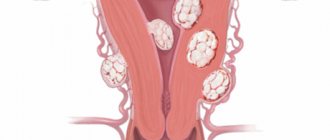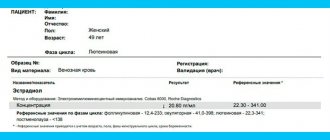Reasons for development
Serosocele in gynecology occurs mainly in women before menopause. The most common reasons for its development:
- Inflammatory diseases in the pelvic organs
These are endometritis, salpingitis, oophoritis, pelvioperitonitis, parametritis. Predisposing factors for the development of these diseases are long-term use of an intrauterine device, frequent abortions and diagnostic curettages, and sexually transmitted infections. As a result of inflammation, fibrin deposits appear on the peritoneum, which glues adjacent tissues together. Adhesions form, and fluid accumulates in the space between them.
- Surgeries on the abdominal and pelvic organs
These are hysterectomy, abdominal myomectomy, cesarean section, operations on the uterine appendages, appendectomy, surgical interventions for diseases of the large or small intestine.
- Mechanical damage to organs, hemorrhages in the abdominal cavity
A common cause of the formation of adhesions is bleeding during ectopic pregnancy and ovarian apoplexy.
- Endometriosis
First of all, these are endometrioid ovarian cysts.
Pelvic serosocele is caused by a malabsorption of fluid secreted by the ovaries during ovulation. This disease was first described by Menmeyer and Smith in 1979. In the literature you can find its synonyms, which help to understand the origin of the disease:
- Benign, peritoneal or postoperative, polycystic or monocystic pleural mesotheliomas associated with impaired fluid absorption.
- Inflammatory peritoneal cysts associated with the gradual accumulation of peritoneal fluid.
- Postoperative peritoneal cysts.
Thus, one of the conditions for the development of a neoplasm is a cavity surrounded by walls. Therefore, when we talk about a serosocele of the breast, we actually mean its seroma - the accumulation of fluid after breast removal or plastic surgery.
Symptoms
10% of patients have no symptoms. Most women complain of prolonged nagging pain in the abdomen, its lower or lateral sections. However, such a cystic formation is often discovered accidentally during instrumental diagnosis of other gynecological diseases.
How quickly does a serosocele grow?
This depends on the activity of the ovaries, the prevalence and severity of the adhesive process. With gross adhesions of tissue in the pelvis, for example, with endometriotic cysts, and concomitant chronic inflammation, fluid in the pockets between the adhesions can accumulate quickly, and a large serosocele of the ovary develops. In other cases, it is partially absorbed and partially distributed throughout the abdominal cavity. Therefore, the diameter of the cyst can range from a few millimeters to 10 cm or more when it fills the pelvic cavity and compresses the internal organs. A large uterine serosocele can cause infertility or miscarriage.
Can the temperature rise with this disease?
Fever is not typical for the cyst itself. However, it can occur when an infection is introduced into its contents. Then the cyst suppurates and turns into a pelvic abscess. This condition requires urgent surgical treatment and the use of antibiotics.
After operations on the abdominal organs, peritonitis or inflammatory processes in the pelvis, the adhesive process forms diffusely, covering all organs. In this case, a serosocele can form on both sides.
Signs of serosocele of the pelvis
There are no specific symptoms of serosocele, so it is a difficult to diagnose disease. Even a large formation may not clinically bother the patient. If symptoms develop, chronic pelvic pain is in first place in terms of frequency of manifestations. In this case, the pain syndrome can be either permanent or transient. The most common pain is in the lower abdomen, lower back, and back. The pain intensifies with physical overexertion, stress, and hypothermia.
Against the background of pain, women often experience menstrual disorder, general fatigue, and decreased performance. The occurrence or intensification of pain during sexual intercourse is typical. With serosocele of the ovaries of enormous size (more than 15-20 cm), swelling in the lower abdomen can be detected.
Pathogenesis
The path of development of the disease is not entirely clear. It is believed to occur secondary to intraperitoneal inflammation and subsequent formation of cavities containing serous fluid secreted by the ovaries.
The most likely mechanism is that the small amount of follicular fluid entering the peritoneal cavity is normally absorbed. However, damage to the peritoneum due to pelvic inflammatory disease or postoperative adhesions reduces absorption and fluid gradually accumulates.
The role of neoplastic, that is, tumor processes, cannot be excluded. They are associated with frequent recurrence of serosocele even after surgical treatment.
How to identify a serosocele
What does this look like? In most cases, the accumulation of serous fluid appears as a swollen lump, similar to a large cyst. Touching it may cause mild pain or discomfort. When such a lump-shaped compaction forms, clear discharge from the surgical wound is often observed. If the discharge takes on a different color or smell or becomes bloody, this means that the wound has become infected.
In rare cases of serosocele, treatment with folk remedies or a complete lack of therapy can lead to calcification, and then a hard node forms at the site of the lump.
Diagnostics
The main diagnostic methods are based on identifying cystic formations on the walls of the pelvis.
An X-ray of the pelvic organs reveals cavities with septa or local accumulations of fluid in the pelvis.
The main ultrasound finding is a large, ovoid or irregularly shaped, anechoic cyst containing fluid, which may have septations. The size can vary from a few millimeters to several centimeters. Sometimes there is intussusception (indentation) of some organs, for example, the ovaries, into the wall of the serosocele. There is no opaque content inside it. Transvaginal ultrasound is usually used, which makes it possible to more clearly determine the characteristics of the tumor.
A computed tomography scan reveals a local accumulation of fluid in the peritoneum or pelvic wall with a normal ovary. Partitions (adhesions) may be visible within the fluid.
Can MRI confirm the diagnosis of serosocele?
Yes, and this method clearly represents the relationship between the ovary and the neoplasm, helping to differentiate different types of pelvic cysts.
Differential diagnosis
A serosocele in the pelvis, formed after surgery or as a result of the above diseases, may resemble the following processes:
- paraovarian cyst;
- hydrosalpinx (fluid accumulation in the fallopian tube);
- pyosalpinx (accumulation of purulent contents in the lumen of the tube);
- appendicular mucocele.
In the presence of septations, it is necessary to distinguish serosocele from multilocular peritoneal mesothelioma and malignant ovarian tumor.
If a cyst is detected, aspiration diagnostics are prescribed - taking its contents under ultrasound control. With a small amount of content, this may be enough to eliminate the disease. Any suspicion of malignancy requires a biopsy of the tumor.
In such cases, doctors may use diagnostic laparoscopy, during which a needle biopsy of the serosocele is performed. The resulting fluid is urgently sent for analysis, and if malignant cells are detected in it, the scope of the operation can be expanded, or then the patient is sent to the gynecological oncology department.
Serosocele and pregnancy
The combination of serosocele and pregnancy will require particularly careful attention from an obstetrician-gynecologist. A large serosocele can lead to compression of the pelvic organs and disrupt the blood supply to the ovaries, uterus, and tubes. Sometimes this formation can cause infertility. In this case, surgical treatment is performed. If pregnancy has already occurred, then a large serosocele can cause severe pain and, sometimes, compression of the pregnant uterus, leading to complications during pregnancy. In this case, it is possible to perform a puncture biopsy of the formation in order to reduce its volume. A serosocele first detected during pregnancy can also be punctured for diagnostic purposes (including to exclude an infectious process in the pelvis). Small serosoceles are not a contraindication to pregnancy and the procedure of in vitro fertilization and embryo implantation.
The information is generalized and is provided for informational purposes. At the first signs of illness, consult a doctor. Self-medication is dangerous to health!
A serosocele (or peritoneal cyst) in a broad sense is a disease, the characteristic feature of which is the accumulation of a clear protein fluid secreted by the serous membranes in one of the internal cavities of the body (for example, in the abdominal cavity). But modern medicine, in the vast majority of cases, uses the term “serosocele” to mean a benign liquid neoplasm that develops in the pelvic organs.
Serosocele belongs to the category of peritoneal cystic formations that are difficult to diagnose, which is primarily due to the difficulties of its clinical differentiation from ovarian tumors and other tumor-like neoplasms.
Treatment
In case of asymptomatic, accidentally discovered serosocele, only observation (regular pelvic ultrasound) is possible. They treat aggravating diseases - urogenital infections, endometriosis.
Does Longidaza help with serosocele?
Since this drug is used in gynecology for the prevention and treatment of adhesions, it will also be effective for serosocele. This is due to the fact that the wall of the pseudocyst is connective tissue, that is, adhesions that arise after surgery, injury or inflammation.
Physiotherapy (laser, magnetic procedures), electrophoresis with absorbable agents, and gynecological massage are also used.
Drug and surgical treatment is used. Therapy begins with the prescription of medications:
- analogues of gonadotropin-releasing hormones, which suppress the function of the ovaries and stop the secretion of fluid from them during the release of the egg (these drugs cause temporary artificial menopause);
- oral contraceptives that inhibit ovulation;
- painkillers and anti-inflammatory drugs - NSAIDs, which eliminate pain in the abdomen and pelvic area.
Is it possible to treat a formation without causing a new adhesive process?
Among minimally invasive interventions, transvaginal aspiration of fluid can be noted, followed by sclerotherapy under ultrasound or X-ray control. A special long needle is used to pierce the posterior vaginal vault and remove the contents of the cyst. Then a chemical substance (ethanol or iodine-containing agents) is injected into it, causing the cavity between the adhesions to collapse.
This method is most suitable for the treatment of serosocele of the cervix, as well as postoperative cysts and formations on the walls of internal organs. The use of iodine-containing drugs is effective in 90% of cases; ethanol gives slightly worse treatment results.
Possible complications of sclerotherapy:
- perforation of the wall of an internal organ;
- infection;
- bleeding;
- ingress of fluid from the cyst cavity or sclerosing substance into the abdominal cavity.
Surgery
In some cases, surgical dissection of adhesions by laparoscopy or laparotomy is necessary. The risk of disease recurrence after surgery is 30-50%. To reduce it after the intervention, it is necessary to undergo rehabilitation, including a course of absorbable agents, physiotherapy, and physical therapy.
Adhesions can be cut with a scalpel or using a laser, water jet (aquadissection) or electric knife. After this, in some cases, absorbable polymer films are applied to the surface of the uterus and appendages to prevent repeated adhesions.
Advantages of laparoscopy over laparotomy:
- less severe postoperative pain;
- short period of incision healing and recovery, which is no more than 2 weeks;
- good cosmetic result (no abdominal scars).
Disadvantages include the longer operation time, the technical difficulty of laparoscopic procedures, and the need for appropriate equipment and trained personnel. In case of pronounced adhesions, the advantage remains with laparotomy.
The rehabilitation period lasts up to six months, during which it is necessary to regularly visit a gynecologist and have an ultrasound scan, avoid heavy loads and warm-up procedures, and adhere to a healthy diet to normalize stool and body weight.
Outcomes of surgical treatment of cysts:
- complete remission: subsidence of the cyst, disappearance of all symptoms;
- improvement: reduction in cyst size by more than 50%, reduction in the severity of symptoms;
- relapse: reduction in cyst size by less than 50%.
Results of the operation depending on its type:
Possible complications of laparoscopy:
- infectious process in the wound;
- seroma (accumulation of fluid under the surgical suture);
- seam divergence;
- postoperative hernia;
- bladder injury;
- intestinal damage;
- bleeding requiring blood transfusion;
- intestinal obstruction.
Such complications develop extremely rarely; with laparotomy, their frequency increases almost 4 times.
When to see a doctor
Typically, only in rare cases do people suffer severe or lingering consequences from a serosocele. What is it, how to recognize the deterioration of your condition and when should you rush to see a specialist? Be very attentive to your well-being and immediately seek emergency medical help if you notice the following symptoms:
- discharge from the lump has become white or looks more like blood;
- body temperature above 38 degrees;
- redness of the skin spreads around the serosocele;
- the seal quickly swells and increases in volume;
- the pain becomes more intense;
- the swollen area has become noticeably warmer to the touch;
- heart rate increased.
In addition, it is necessary to seek help from professionals as soon as possible if the surgical wound has opened due to swelling or if you notice that pus has begun to ooze from it. Most often, patients with a weakened immune system suffer from these complications of serosocele.
Prevention
Serosocele does not become malignant and therefore does not threaten the patient’s life. However, it can cause complications:
- infertility;
- menstrual irregularities;
- deformation of the uterus and fallopian tubes;
- ectopic pregnancy;
- disorders of urination and defecation.
Prevention measures:
- annual examination by a gynecologist;
- prevention and treatment of pelvic inflammatory diseases, endometriosis;
- effective contraception;
- natural vaginal birth.











